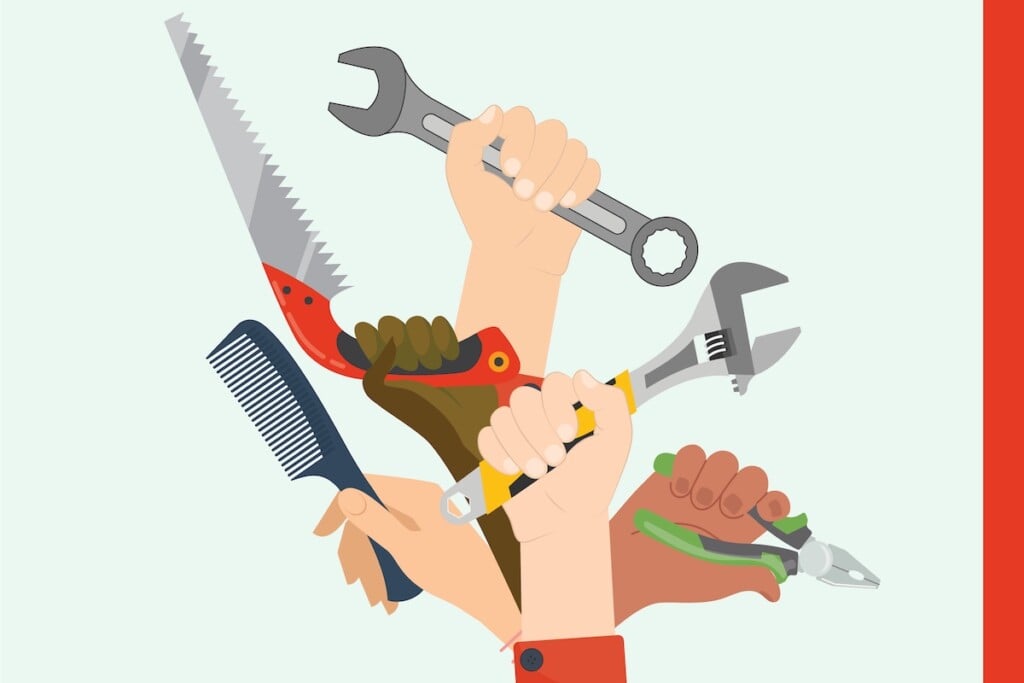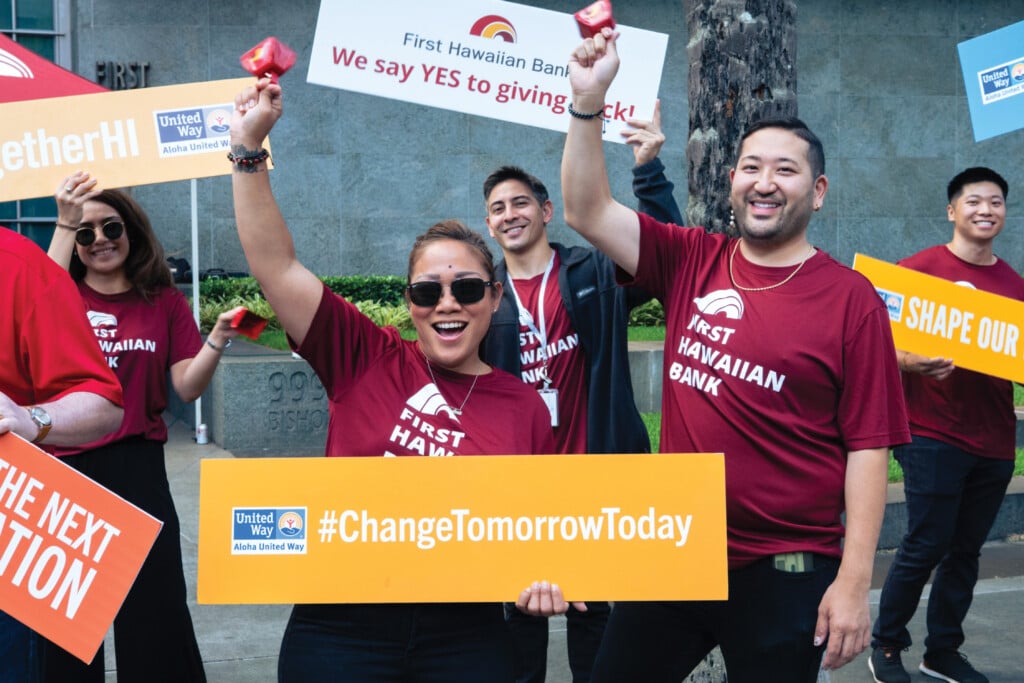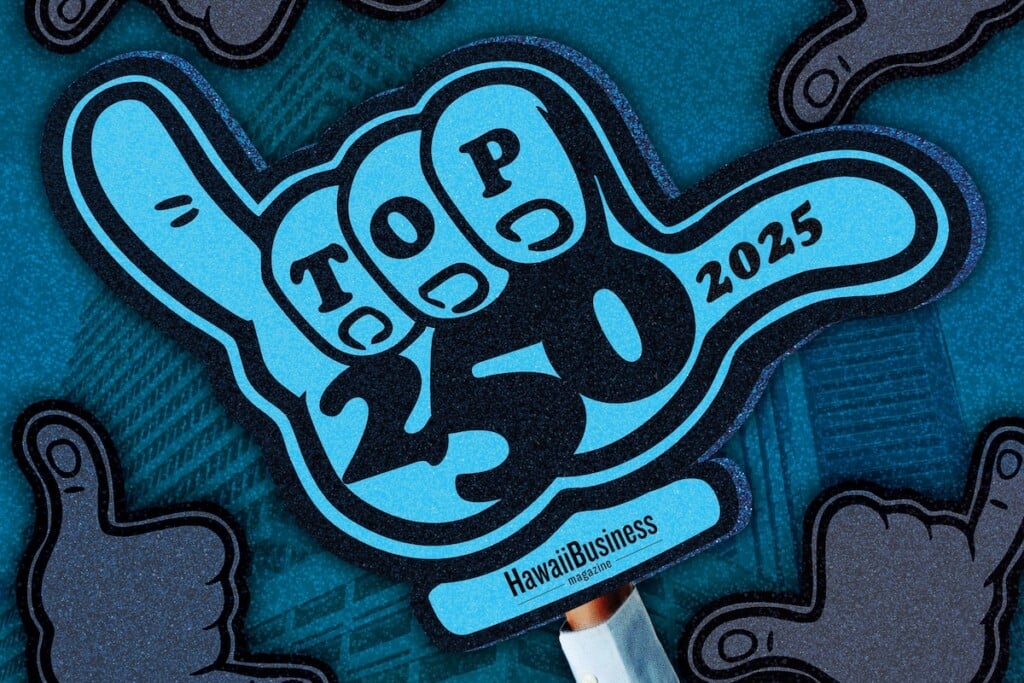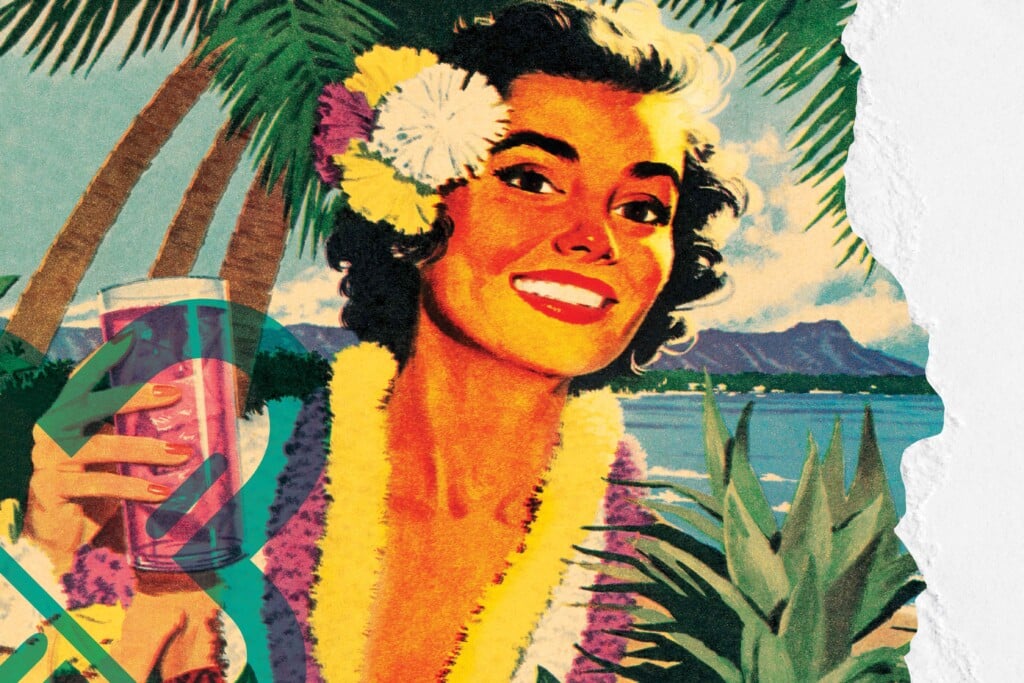Can Hawaiʻi Become the Napa Valley of Chocolate?
Many places in the U.S. manufacture chocolate, but only Hawai‘i cultivates its main ingredient, cacao, on a commercial level. Efforts to establish Hawai‘i as a globally recognized gourmet chocolate producer are gaining momentum.
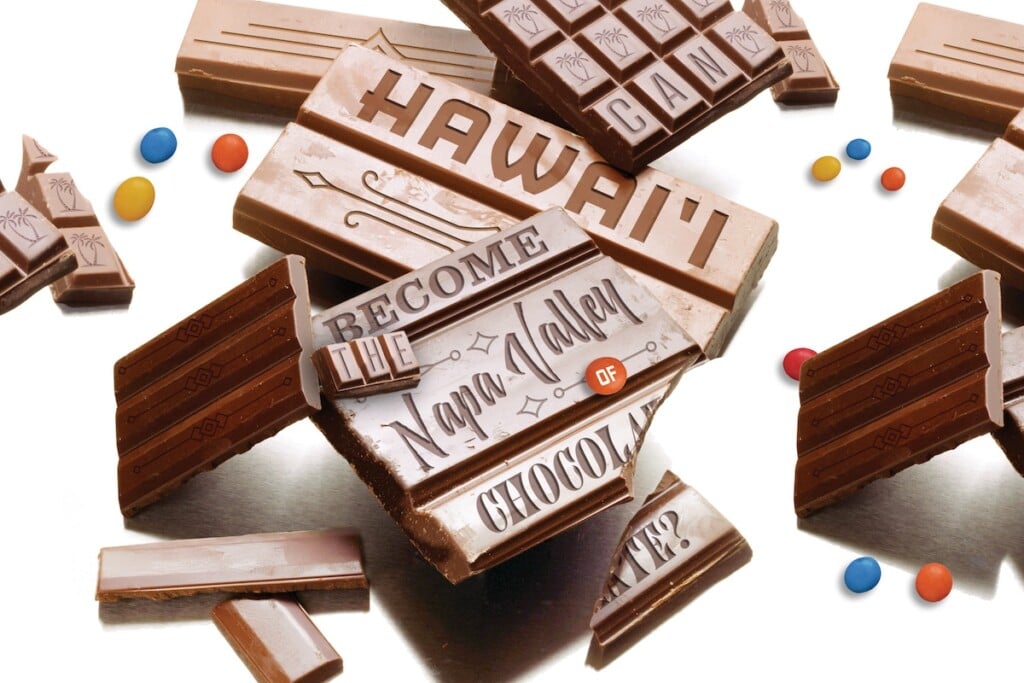
Just as Kona coffee became world-renowned in the 20th century, local cacao growers and chocolatiers hope Hawaiian chocolate achieves similar acclaim in the 21st century.
These specialty products are “not something you eat every day. It may be a special occasion or just a little pricey, and so you treat yourself. … Usually, they’re a bit indulgent [but] indulgence should be healthy. I believe in healthy snacking and healthy choices,” says Danny Rubenstein, who has spent over 40 years advising innovative food and beverage companies. He’s also the founder of DRCNOW, a strategic advisory firm.
What sets apart specialty foods and beverages – such as Champagne, artisan cheese, Wagyu beef, white truffle, Kona coffee and Hawai‘i chocolate – is a combination of factors: How rare is the product and how difficult is it to cultivate? Is its place of origin notable, does it contain high-quality ingredients, are its processing practices satisfactory? And does the product taste great?
“We’d like to see Hawai‘i become known as the Napa Valley of chocolate. Everybody that grows and makes chocolate here is part of that,” says Rubenstein, who credits Lawrence Boone, co-founder of Lonohana Estate Chocolate, for coining the Napa Valley analogy. Lonohana is one of the six local companies that Rubenstein works with.
Inspired by Napa Valley’s regional success in producing award-winning wines and attracting millions of visitors with vineyard tours and tastings, Hawai‘i’s chocolate industry is striving to craft exceptional chocolate bars and popularize local cacao farm and chocolate factory tours.

Mānoa Chocolate has its own five-acre cacao orchard, Kamananui Estate, located in Waialua on O‘ahu’s North Shore.
How Place Affects Taste
Cacao trees – the source of chocolate’s two main ingredients, cacao and cocoa butter – flourish in tropical zones approximately 20 degrees north and south of the equator. That makes Hawai‘i the only U.S. state ideal for farming cacao.
Ken Melrose is the owner and operator of Primavera Farm, which has about 400 cacao trees in Kealakekua in the South Kona district of Hawai‘i Island. “We have a highly exceptional, as they refer to it in the business, terroir. Our climate and our soils are superior,” he says.
The French word “terroir” is associated mainly with winemaking and refers to the complete environment in which a particular wine is produced.
Dylan Butterbaugh, owner and founder of Mānoa Chocolate, says a few things affect chocolate’s flavor. “It would be genetics. It’d be terroir, like soil and how much it rains, and then you have the ferment, the wild yeast and the bacteria that do that fermentation process. And between those three factors, you get really unique tastes,” he says.

Mānoa Chocolate’s Kamananui cacao orchard offers farm tours with chocolate tastings five days a week. Pictured, owner and founder Dylan Butterbaugh explains the chocolate-making process during a tasting at their orchard pavilion.
Mānoa Chocolate, based in Kailua on O‘ahu, offers 11 single-origin chocolate bars crafted from 100% Hawai‘i-grown cacao. Some of the cacao beans are from individual farmers and others are provided by a cooperative of small farmers, Butterbaugh explains. These bars are named after the places where the cacao is sourced: Nīnole, Kealakekua, Kona and Hono‘ili from Hawai‘i Island; and Hale‘iwa, Kahalu‘u, Mililani, Ko‘olaupoko, Waimānalo and Kamananui from O‘ahu. Kamananui, Mānoa Chocolate’s own cacao orchard located on North Shore, is available in both 70% dark and milk chocolate, with all other Hawaiian single-origin varieties offered only in 70% dark.
Each of Mānoa Chocolate’s bars offers a unique set of tasting notes. For example, the Kealakekua bar features hints of strawberry, macadamia nut and vanilla. In contrast, the Kamananui bar hints at peach, caramel and pomegranate, and the Nīnole lime, walnut and brownie.
“I think the characteristic of Kona cacao is fruity,” Melrose says. “There are some warm, fudgy notes underneath it. It’s got a wonderful fruity, clean finish.”
Melrose, who planted his first cacao trees in 2015, harvests tree-ripened cacao pods, which contain seeds covered in pulp. The seeds and pulp are removed, fermented and dried to create cacao beans, which then undergo several more processes. The beans are then combined with a few other ingredients to create chocolate.
At the prestigious Salon du Chocolat, the world’s largest chocolate exhibition, Melrose’s Primavera Farm won the award for best cacao in 2019. In 2022, Primavera won for best criollo – a rare variety of cacao. “And a friend of mine from Kona Restoration Farm won this year. Three out of the last five chocolate festivals, the winners in the bean contest have been from Kona cacao,” he says.
In addition to selling chocolate under his Primavera Farm brand, Melrose sells a significant portion of his cacao beans to Mānoa Chocolate and Valley Isle Chocolate. Both companies process his beans and turn them into chocolate bars sold under their brands.
In February, he and Butterbaugh “shook hands” on a much bigger deal.
“So I’ve started increasing my production capacity as a result. Dylan has been a wonderful supporter of craft chocolate in Hawai‘i and in supporting regional farms,” says Melrose. “The Kealakekua Bar that he makes is made with beans from my farm, and is his top-selling chocolate, so he likes it a lot.”
Butterbaugh says, “It’s probably our most popular when people taste it. I think it’s because it’s not offensive in any way to anybody, because it’s smooth, creamy and chocolatey, whereas some of the other Hawaiian cacaos can be quite fruity. And not everyone likes fruity chocolate.”
Great taste is not the only thing that dark chocolate has going for it. A 2011 study titled “Cocoa and Chocolate in Human Health and Disease,” published in the scientific journal Antioxidants & Redox Signaling, cites the strong evidence for the health benefits of dark chocolate.
“The voluminous literature addressing health effects of cocoa and chocolate, only a portion of which is represented here, is overall quite compelling. The probability of a net health benefit for most people from habitual intake of dark chocolate is high,” the study says.

Source: The Hawai‘i Cacao Survey, conducted by UH Mānoa College of Agriculture and Human Resources & O‘ahu Resource Conservation & Development Council
An Up-and-Coming Industry
Skip Bittenbender is a now-retired professor at UH’s College of Tropical Agriculture and Human Resilience who specialized in cacao, coffee and kava. He and his colleagues began surveying the local cacao and chocolate industry in 2010. The 2015 Hawai‘i Cacao Survey found that 25 respondents anticipated harvesting cacao that year, while 16 reported their trees were not yet bearing pods and three planned on planting their first cacao trees.
That same survey reported there were 43 acres of harvesting cacao trees and 53 acres of cacao trees too young for harvesting in 2014. Cacao trees typically take three to five years to mature and begin bearing pods, which are ready for harvest another six months later.
The Hawai‘i Cacao Survey is now conducted every other year. The 2023 survey (tinyurl.com/HIcacao) had 41 respondents who said they would harvest cacao that year, while four said their cacao trees would not be ready for harvesting. It also estimated there to be 172 acres of cacao trees harvesting statewide in 2022.
Preliminary findings from the 2025 survey indicate that the total acreage of planted cacao trees statewide reached 189 in 2024, with plans for an additional 50 acres over the next five years. It also indicated that over half of last year’s cacao harvest remained in Hawai‘i for chocolate processing, while a minority of beans were shipped elsewhere. And approximately half of the local chocolate production in 2024 was conducted by vertically integrated “tree-to-bar” companies – meaning companies that handle every step of the process, from farming the cacao trees and processing the beans into chocolate, to distributing the finished bars on the market.
Although local cacao and chocolate production is growing, it isn’t booming yet. Cacao has not made the Hawai‘i Department of Agriculture’s annual list of the state’s top 15 or 20 agricultural commodities based on value of production. The Hawai‘i Cacao Survey doesn’t address profit or revenue, so it remains unclear exactly how much revenue the industry is generating.
Cacao vs. Cocoa
Cacao refers to the raw fruit found inside cacao pods, which can be turned into cacao powder (sometimes simply labeled as “cacao” on ingredient lists). Cocoa also refers to a powder derived from cacao.
The key distinction is the roasting temperature: cacao powder is roasted at low heat before milling, which results in a more bitter taste and a richer nutritional profile. Cocoa powder undergoes a higher-temperature roast, causing it to have a sweeter flavor, less fat and reduced nutritional content. The plant-based fat extracted from cacao is known as cocoa butter.
“As far as I know, no one makes de-fatted cocoa powder from Hawaiian cacao. The way we normally make it here in Hawai‘i is after the cacao has been fermented and dried, it’s roasted, then cracked and winnowed, and made into what we call ‘cocoa liquor’. Cocoa liquor just means liquefied cacao,” says Bittenbender.

Cacao pods are the fruit of cacao trees. The seeds and pulp they contain are fermented, dried, roasted, cracked and winnowed to create cocoa liquor. Pictured are the various stages of Lonohana’s bean-to-bar chocolate production.
No Guilt, Just Pleasure
Lonohana Estate Chocolate, founded in 2009, includes a cacao farm on O‘ahu’s North Shore and a chocolate factory, retail store and tasting bar in Honolulu. All of its products are made with 100% locally grown cacao. Seneca Klassen, Lonohana’s other co-founder, says the company is dedicated to making chocolate out of “the highest quality ingredients and processes we can. It’s going to cost what it costs, and we’re going to tell people why. Hopefully there’s enough people out there who are willing to support that, even though it’s more expensive, because of the story, because of the value of it, because of the taste of it.”
In addition to the premium being driven by high-quality ingredients and processes, the cost reflects fair wages for all of the people who contribute to the finished product.
“We’ve all grown up thinking that chocolate is a relatively cheap treat,” says Klassen. “We’re trying to create products that, yes, are more expensive than you’re used to, but guess what? You can feel truly good about them. You can ask us any questions you want about the supply chain, and we can answer them honestly and transparently because we’re doing it correctly and not taking advantage of anybody.”
Most of Lonohana’s 2.3-ounce chocolate bars retail at $16. That’s more than six times the price at Target of a 4.4-ounce Hershey’s XL milk chocolate bar.
“We’re always pursuing that kind of strategy that’s a very different model than ‘make me the cheapest product you can make me,’ which is going to result in a totally different hierarchy of needs, right?” says Klassen. “If I tell you, ‘Hey, make me this candy bar, it’s got to cost no more than $2.50 at retail.’ Well, you’re going to be forced to make a lot more compromised choices.”

Mānoa Chocolate’s factory is located at the Kapa‘a Industrial Park in Kailua. Owner Dylan Butterbaugh says they are going to start offering self-guided factory tours sometime this summer.
Indeed, “Big Chocolate” has long been plagued by controversy. Industry giants like Nestlé, Mars, Hershey, Lindt & Sprüngli, and Ferrero have been linked to cocoa sources, mainly in West Africa, that have come under scrutiny for human rights violations, including unfair wages, dangerous working conditions, child labor and even human trafficking.
According to the U.S. Department of Labor’s Bureau of International Labor Affairs, Ivory Coast and Ghana “together, produce nearly 60% of the world’s cocoa each year, but the latest estimates found that 1.56 million children are engaged in child labor on cocoa farms in these two countries.” The bureau also says that 43% of these child laborers have been exposed to agro-chemical hazards and other safety risks, including lifting heavy loads, burning fields and using sharp tools.
A 2020 report by the World Economic Forum states that the average cocoa farmer earns just $1 per day in Ghana and 78 cents per day in Ivory Coast. Both figures are far below the World Bank’s extreme poverty threshold of $1.90 per day. In comparison, the minimum hourly wage in Hawai‘i is $14 and will increase to $16 on Jan. 1, 2026.
“The cool thing about building a local industry that’s agriculturally based is that we make jobs across a whole spectrum of things – we make farm, manufacturing, sales, marketing and retail jobs. That’s great news, but it’s a big ‘ohana to support. And to do that properly, we have to build a value proposition that has enough money in it to pay all those people properly in Hawai‘i’s economy,” says Klassen.
There are dozens of cacao farms and chocolate companies across the four largest Hawaiian Islands. Many offer farm and factory tours, including Lonohana Estate Chocolate and Mānoa Chocolate.
“We’re trying to make the best chocolate in the world, and I think we’re doing a better job than people would realize,” Butterbaugh says of Hawai‘i’s overall chocolate industry. “It’s kind of like stumbling on trying to make premier cru wine before people realized what that was.”
